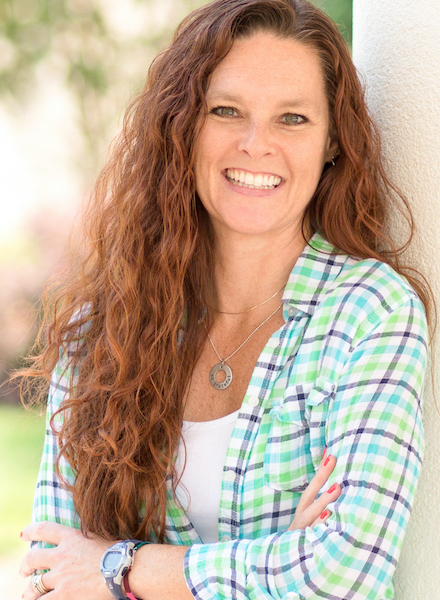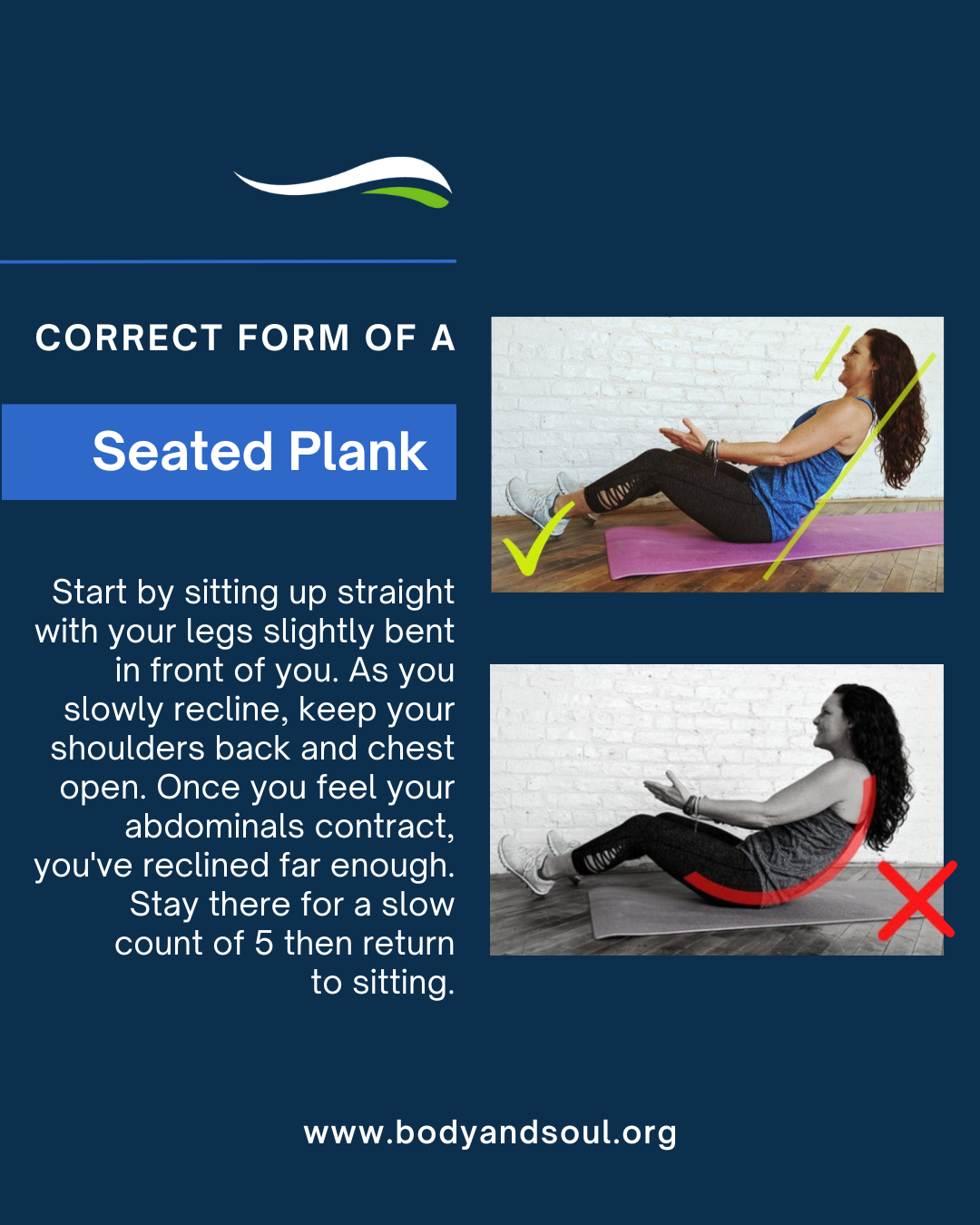make the most of your workout - seated plank
As we continue this series for the purpose of making the most of the effort we put into our strength training routine, we’re focusing on the core and the seated plank exercise. Sounds simple enough, but this exercise requires focus and intentionality.
WHY – The seated plank in its most simple form targets the rectus abdominis muscle. This muscle extends along the whole length of the front of the abdomen and is primarily responsible for flexing the lumbar spine as when we complete a set of abdominal crunches. But this large muscle also plays an important role in respiration when we forcefully exhale, especially when lifting heavy weights. The seated plank is an excellent exercise choice that works the rectus abdominis isometrically, which means without movement at a joint. Isometric exercise has been proven to help maintain muscle strength and can be especially beneficial for exercisers who have arthritis, which can be aggravated by using muscles to move a joint through its full range of motion.
HOW – To make the most of your seated plank workout, keep these tips in mind:
- You can perform seated planks on the floor or in a sturdy chair.
- When planking on the floor, start by sitting up straight with your legs slightly bent in front of you. Your feet may remain on the floor or be lifted off the floor for an advanced seated plank.
- When using a chair, sit on the edge and plant your feet firmly on the floor.
- Maintain proper posture and alignment of your back (spine), including your neck (cervical spine).
- As you slowly recline, keep your shoulders back/chest open and your chin slightly tucked. Think about looking straight ahead to make sure you don’t drop your chin and find yourself looking down at your knees.
- Once you feel your abdominals contract (they might shake a little!), you’ve reclined far enough. Stay there for a slow count of 5 as you keep breathing deeply and slowly. Then return to sitting. 10-15 reps make for a great exercise break in your day.
MAKING IT MORE INTERESTING –
- ADD KNEE LIFTS – as you remain reclined, alternately lift one knee at a time slowly
- ADD PADDLING ARMS – with or without a small weight held forward from the chest, slowly move your arms as if you are paddling a kayak in smooth water, staying in your strong reclined position
- ADD TRUNK ROTATION – as you remain reclined with your arms crossed at your chest, rotate slightly from side to side as if you are looking at your workout buddy sitting beside you
ONE FINAL TIP – The biggest challenge during a seated plank is to keep your back from rounding as you recline. As you master this, you are on your way to a stronger and more stable core, which supports better posture, helps with balance, and improves everyday functional movement.
by Amy Stafford
Panama City Beach, FL
 Amy Stafford is the President of Body & Soul® Fitness, Certified Personal Trainer, ACE faculty and ACE Group Fitness Instructor. She is a leader in the fitness industry and is a popular speaker for women's events, retreats, fitness conferences. For information on booking Amy for your event or for an interview please email This email address is being protected from spambots. You need JavaScript enabled to view it.. Amy currently resides in the Panama City Beach, FL area and teaches virtually.
Amy Stafford is the President of Body & Soul® Fitness, Certified Personal Trainer, ACE faculty and ACE Group Fitness Instructor. She is a leader in the fitness industry and is a popular speaker for women's events, retreats, fitness conferences. For information on booking Amy for your event or for an interview please email This email address is being protected from spambots. You need JavaScript enabled to view it.. Amy currently resides in the Panama City Beach, FL area and teaches virtually.Body and Soul® Fitness is an international Christian fitness organization that trains and equips instructors to lead a variety of group fitness programs including choreographed aerobics-style Cardio Strength & Flexibility™, cardio dance style Dance Blast™, free-weights-focused Power Strength™, boot camp style FIT360™ and Longevity FIT360™, and GOLD™ - lower impact programming for participants that are pregnant, have weight challenges, injuries, or other medical conditions. These exercise classes meet in church gyms, community centers, gymnasiums, parking lots, schools, etc. across the United States, Europe, and Africa. In-person and virtual fitness classes are available.
Key words: Christian fitness, women's exercise classes, group fitness, dance aerobics classes, Christian group fitness, Christian fitness app, FitTV, Body & Soul, Body and Soul, fitness instuctor training, low impact exercise







